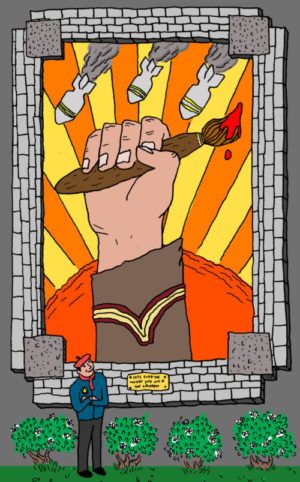
At the time Kim Jong Il was given his first prominent position, Kim Il Sung’s ironclad rule was through the government of the DPRK, which possessed all the ruling powers—not the Workers’ Party. The OGD was merely an instrument of the Workers’ Party, which was, at the time, just one of many bureaucratic institutions in the country. In a cunning ploy that would unravel slowly over the course of the next decade, Kim Jong Il would elevate the authority of the OGD by arguing that North Korean society needed the Party to play a stronger role in upholding the command and ruling stature of the Great Leader Kim Il Sung. Eventually, the power to appoint personnel was shifted away from the government and to the OGD, run by Kim Jong Il. Among its activities, the OGD was tasked with carrying out surveillance on all of the Great Leader’s supposed internal enemies. This surveillance became so rampant that it culminated in Kim Il Sung himself essentially falling under surveillance by the OGD. By that point, Kim Jong Il and his cohorts in the OGD had taken over all the prominent positions, transforming the Workers’ Party into the most prominent political organ in the DPRK. From 1980, it was no longer Kim Il Sung’s government that actually ran things but the Workers’ Party under Kim Jong Il, whose own deification soon commenced. Kim Il Sung was still officially the “Great Leader” to North Koreans and the outside world. But in actuality, all of the real power lay with the son. In this dual structure, Kim Il Sung’s men, who were by now of advanced age, were given the most prestigious titles—but that’s all they were: titles. They wielded very little power. The real power was held by men in the OGD: Kim Jong Il’s men.
This is why there is so much mystique behind the political structure of the Hermit Kingdom—why so few outsiders are able to understand it. It has its roots in Kim Jong Il’s division of powers, which enabled his usurpation of the throne. His pruning would culminate shortly after his father’s death in 1994, with the purging of all his father’s loyalists, banning them and their progeny from Workers’ Party membership, and the banishment of several thousand prominent families from Pyongyang. Clearly, a new sort of loyalty was now required.
Walking or driving through the streets of Pyongyang, it becomes quickly apparent that the DPRK has more public art than any other country in the world. In place of the visual pollution of advertising that clutters so many cities in the twenty-first century, the Pyongyang streets are filled with colorful...
You have reached your article limit
Sign up for a digital subscription and continue reading all new issues, plus our entire archives, for just $1.50/month.
Already a subscriber? Sign in




